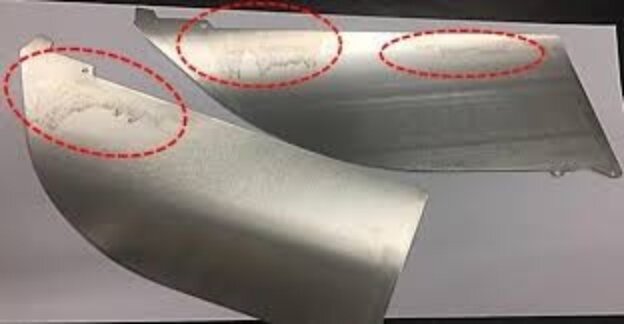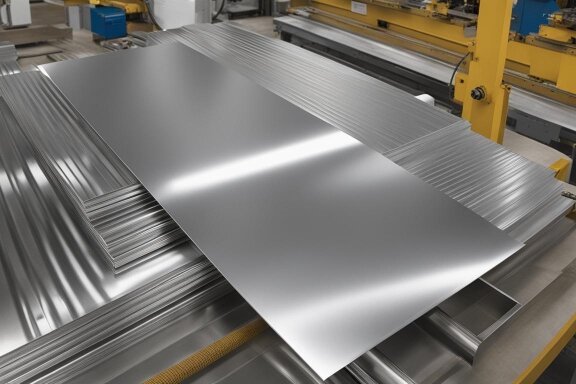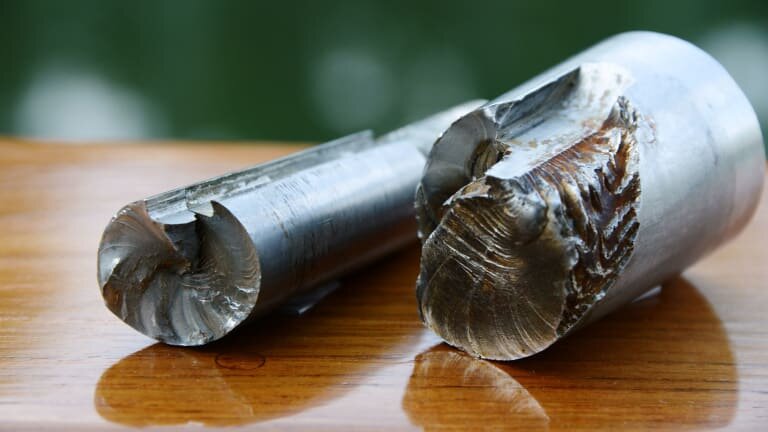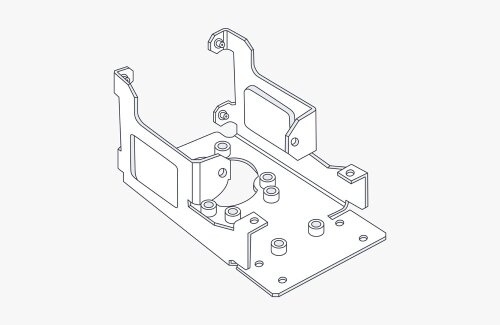L'assemblage par soudage est un processus clé de la fabrication qui exige précision et compétence. Il consiste à assembler des pièces à l'aide de la chaleur, de la pression ou des deux. Cependant, la maîtrise de l'assemblage par soudage peut s'avérer difficile. Les techniques et méthodes appropriées sont essentielles pour garantir des connexions solides et durables.
L'assemblage par soudage est essentiel pour des industries telles que l'automobile, l'aérospatiale et la construction. En suivant les meilleures pratiques, vous pouvez améliorer la résistance et la qualité de vos soudures. Examinons ces techniques plus en détail.
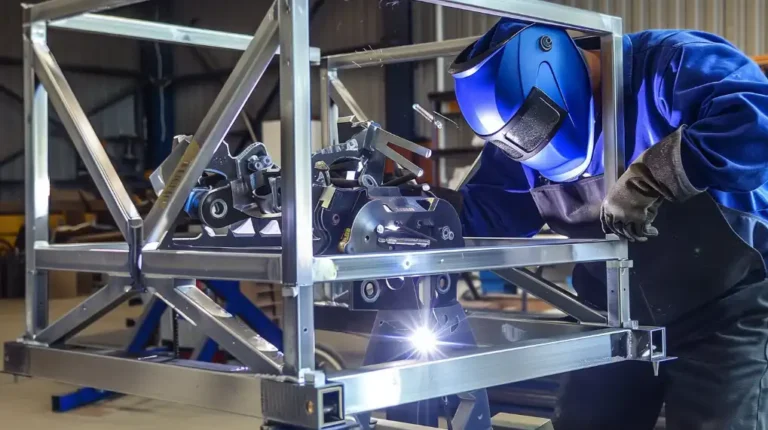
Qu'est-ce que l'assemblage par soudage ?
L'assemblage par soudage est une méthode utilisée pour assembler deux ou plusieurs pièces métalliques. Pour ce faire, on applique de la chaleur, de la pression, ou les deux, ainsi qu'un matériau d'apport. L'objectif principal est de former une liaison solide et permanente, capable de résister aux contraintes et aux facteurs environnementaux.
Il existe différentes techniques, telles que le soudage MIG, le soudage TIG et le soudage par bâtonnets. Chaque méthode a ses avantages, en fonction du matériau et de l'application.
Techniques de soudage standard en assemblage
Le soudage peut être réalisé à l'aide de différentes techniques, chacune offrant ses avantages. Chaque méthode est adaptée à des applications différentes, en fonction des besoins du projet.
Soudage MIG
Soudage MIG est une méthode de fabrication très répandue. Elle est connue pour sa rapidité et sa facilité d'utilisation. Cette technique utilise un fil-électrode continu et un gaz de protection pour créer une liaison solide. Le soudage MIG est idéal pour la production de gros volumes et fonctionne bien avec de nombreux métaux, tels que l'acier et l'aluminium.
Soudage TIG
Soudage TIG est connu pour ses soudures nettes et précises. Elle utilise une électrode de tungstène pour générer de la chaleur et une baguette d'apport pour assembler les matériaux. Cette méthode est plus lente que le soudage MIG, mais elle produit des résultats de meilleure qualité. Elle est idéale pour les projets détaillés ou les matériaux tels que l'acier inoxydable et le titane.
Soudage à la baguette
Soudage à la baguetteLe soudage à l'arc, également connu sous le nom de SMAW (Shielded Metal Arc Welding), est l'une des méthodes les plus souples. Elle utilise une électrode consommable enrobée de flux, qui crée de la chaleur et forme un bain de soudure. Le soudage à la baguette est couramment utilisé à l'extérieur et est excellent pour souder des matériaux épais.

Facteurs influençant le choix du procédé de soudage
Le processus de soudage approprié dépend de plusieurs facteurs. Ces facteurs garantissent une soudure solide, fiable et rentable.
Considérations matérielles
Le matériau que vous soudez a une incidence sur le processus que vous choisissez. Des métaux différents nécessitent des méthodes de soudage différentes. Par exemple, l'aluminium nécessite un soudage TIG pour une soudure nette et précise. L'acier est plus souple. En fonction de l'épaisseur et de la résistance requises, il peut être soudé au MIG ou au bâton.
Conception des joints et position de soudage
La conception du joint influence le processus de soudage. Par exemple, les joints en T ou les assemblages bout à bout peuvent nécessiter des techniques spécifiques pour créer une liaison solide. La position de soudage a également son importance. Le fait de souder à plat, à l'horizontale, à la verticale ou au-dessus de la tête peut avoir une incidence sur la facilité ou la difficulté du travail.
Exigences en matière de vitesse
Les environnements à volume élevé nécessitent généralement des techniques de soudage rapides. Le soudage MIG ou par points est préférable parce qu'il est rapide et efficace. Pour les travaux précis et de faible volume, le soudage TIG peut être préférable, même s'il est plus lent.
Matériaux utilisés dans les assemblages soudés
Les matériaux utilisés dans les assemblages soudés ont un impact significatif sur le processus de soudage, les techniques choisies et la résistance du produit final. Voici quelques matériaux couramment utilisés dans les assemblages soudés :
Acier
L'acier est l'un des matériaux de soudage les plus courants. Il est solide, polyvalent et facile à souder. Il existe différents types d'acier, notamment l'acier au carbone, l'acier inoxydable et l'acier allié. Chaque type a ses propres besoins en matière de soudage.
Aluminium
L'aluminium est léger et résistant à la corrosion, ce qui en fait un choix populaire pour des industries telles que l'aérospatiale et l'automobile. Toutefois, son point de fusion plus bas et sa tendance à absorber l'humidité le rendent plus difficile à souder que l'acier.
Acier inoxydable
L'acier inoxydable est connu pour sa résistance à la corrosion et sa durabilité. Il nécessite un soudage précis pour conserver son aspect et ses propriétés de résistance à la corrosion. Les soudures TIG et MIG sont les méthodes les plus courantes pour l'acier inoxydable.
Cuivre et alliages de cuivre
Le cuivre et ses alliages sont excellents en termes de conductivité et de résistance à la corrosion. Le soudage du cuivre nécessite un contrôle minutieux de la température, car il peut facilement surchauffer et devenir cassant. Les soudures MIG et TIG sont généralement utilisées pour les alliages de cuivre, bien que des techniques spécialisées puissent être nécessaires pour des alliages spécifiques.

Préparation au soudage
Une bonne préparation est essentielle pour obtenir des soudures de haute qualité. Voici les points clés sur lesquels il faut se concentrer pendant la phase de préparation :
Préparation et nettoyage du matériel
Avant le soudage, les matériaux doivent être propres et exempts de contaminants. La rouille, l'huile, la saleté ou la peinture peuvent affaiblir la soudure et provoquer des défauts. Le nettoyage garantit que le bain de soudure se forme correctement et renforce la liaison de la soudure.
Préparation et montage des joints
Les bords des matériaux doivent être préparés de manière adéquate pour garantir une liaison solide. Il peut s'agir d'un biseautage, d'un chanfreinage ou d'un meulage des bords pour qu'ils s'ajustent parfaitement. L'ajustement du joint est également essentiel. Les pièces doivent être correctement alignées, sans espace ni désalignement susceptible d'entraîner une mauvaise qualité de la soudure.
Essais et inspections avant soudage
Les essais et les inspections préalables au soudage permettent de vérifier que tout est en ordre avant de commencer le processus de soudage. Il peut s'agir de vérifier les spécifications des matériaux pour s'assurer de leur compatibilité, de confirmer la conception des joints et d'inspecter l'ajustement pour s'assurer de sa précision.
Avantages de l'assemblage par soudage
L'assemblage par soudage est une méthode populaire dans la fabrication en raison de ses nombreux avantages. Il s'agit d'une méthode rentable, efficace et fiable pour assembler des matériaux. Voici quelques avantages clés de l'assemblage par soudage :
Rapport coût-efficacité
Le soudage est souvent moins cher que d'autres méthodes d'assemblage, telles que rivetage ou le boulonnage. C'est particulièrement vrai pour la production en grande série, où le coût par unité diminue avec l'automatisation. En outre, le soudage élimine le besoin de pièces supplémentaires telles que fixationsréduisant ainsi les coûts des matériaux et le temps d'assemblage.
Résistance et durabilité
Les joints soudés sont souvent plus résistants que le matériau de base lui-même. Lorsqu'il est effectué correctement, le soudage crée une liaison aussi forte, voire plus forte, que le matériau environnant. Le soudage est donc idéal pour les applications critiques où la résistance est importante.
Polyvalence
Le soudage est un procédé flexible qui permet de combiner de nombreux matériaux, notamment l'acier, l'aluminium, l'acier inoxydable et le titane. Il convient également à différents types de joints, tels que les joints d'about, d'angle, de bord et en té.
Efficacité et rapidité
Le soudage est rapide, en particulier avec des techniques telles que le soudage MIG et le soudage par points, qui sont courantes dans la fabrication en grande série. Le soudage rapide permet de réduire le temps de production et d'augmenter l'efficacité.
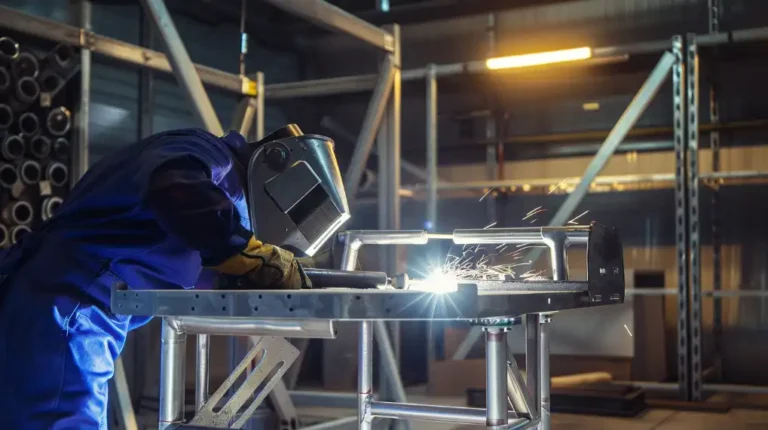
Les défis de l'assemblage par soudage
Si le soudage d'assemblages présente de nombreux avantages, il n'est pas sans poser quelques problèmes. Ces défis doivent être relevés pour garantir la solidité et la fiabilité des soudures. Voici quelques problèmes courants rencontrés lors de l'assemblage par soudage :
Exigences élevées en matière de compétences pour les soudeurs
Le soudage requiert un niveau élevé de compétences et d'expertise. Les différents matériaux et techniques nécessitent des connaissances spécialisées. Les soudeurs inexpérimentés peuvent créer des soudures faibles, entraînant des défaillances dans le produit final. Une formation et une certification adéquates sont nécessaires pour garantir que les soudeurs effectuent leur travail avec précision et en toute sécurité.
Maintenir une qualité constante
Le soudage manuel est particulièrement difficile à réaliser pour maintenir une qualité uniforme sur l'ensemble d'un cycle de production. Les systèmes automatisés peuvent aider à obtenir des résultats plus cohérents, mais même ces systèmes nécessitent une maintenance et un étalonnage appropriés.
Gestion et contrôle de la chaleur
Une chaleur trop élevée peut provoquer des déformations, des brûlures ou affecter les propriétés du matériau. À l'inverse, une chaleur insuffisante peut entraîner des soudures faibles ou incomplètes. Les soudeurs doivent adapter leurs techniques avec soin pour éviter de surchauffer ou de sous-chauffer le matériau.
Manipulation des variations de matériaux
Les matériaux utilisés pour le soudage présentent souvent des variations de composition, d'épaisseur et d'état de surface. Ces différences peuvent avoir un impact sur le processus de soudage et la qualité du produit final. Les soudeurs doivent être capables d'identifier ces variations et d'adapter leurs techniques pour garantir une liaison solide.
Conclusion
L'assemblage par soudage est un processus essentiel dans la fabrication. Il permet d'assembler des matériaux de manière solide, durable et efficace. Vous pouvez créer des soudures fiables et de haute qualité en choisissant les techniques de soudage appropriées, en préparant correctement les matériaux et les joints et en suivant les meilleures pratiques.
Prêt à améliorer votre processus de soudage ? Contactez-nous dès aujourd'hui pour savoir comment nous pouvons vous aider à optimiser vos techniques d'assemblage par soudage afin d'obtenir de meilleurs résultats et des délais de production plus courts.
FAQ
Quelle est la meilleure technique de soudage pour mon projet et comment la sélectionner ?
La technique de soudage appropriée dépend de facteurs tels que le type de matériau, la taille du projet et le niveau de précision requis. La technique MIG est rapide et convient bien aux projets de grande envergure, tandis que la technique TIG offre une grande précision pour les matériaux plus fins.
Le soudage peut-il être automatisé ?
Oui, le soudage peut être automatisé à l'aide de systèmes robotisés. Ces systèmes sont idéaux pour la production de gros volumes et permettent d'obtenir des soudures régulières et de haute qualité.
Comment le soudage peut-il contribuer à créer une industrie manufacturière durable ?
Le soudage est une méthode durable car il réduit les déchets de matériaux et permet la réparation et la réutilisation des produits métalliques. Les techniques de soudage avancées réduisent également les émissions et améliorent l'efficacité énergétique.
Plus de ressources :
Soudage automatisé – Source : Keyence
Fabrication durable – Source : Glossaire
Techniques de soudage – Source : Wcwelding
Hey, je suis Kevin Lee

Au cours des dix dernières années, j'ai été immergé dans diverses formes de fabrication de tôles, partageant ici des idées intéressantes tirées de mes expériences dans divers ateliers.
Prendre contact

Kevin Lee
J'ai plus de dix ans d'expérience professionnelle dans la fabrication de tôles, avec une spécialisation dans la découpe au laser, le pliage, le soudage et les techniques de traitement de surface. En tant que directeur technique chez Shengen, je m'engage à résoudre des problèmes de fabrication complexes et à favoriser l'innovation et la qualité dans chaque projet.

